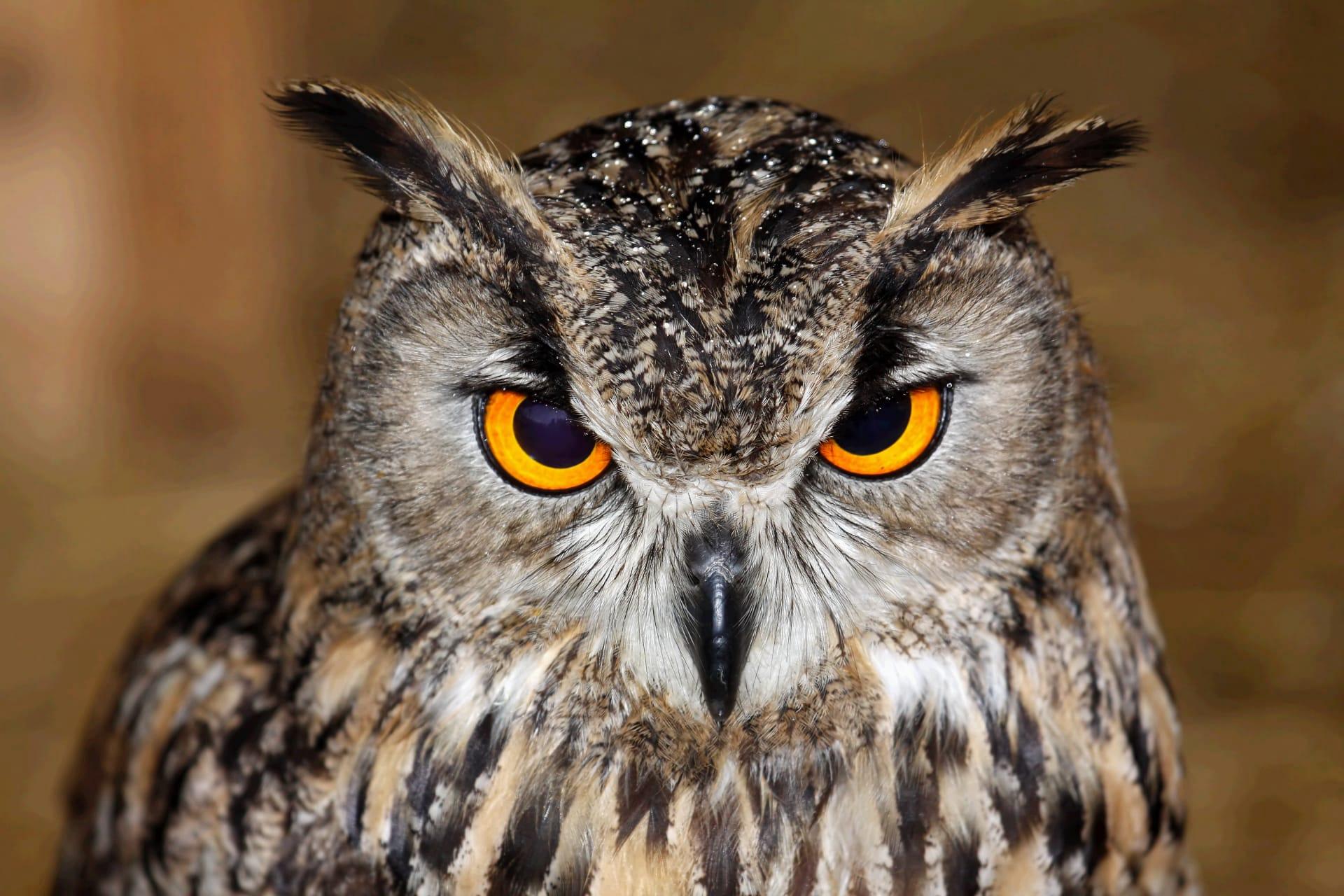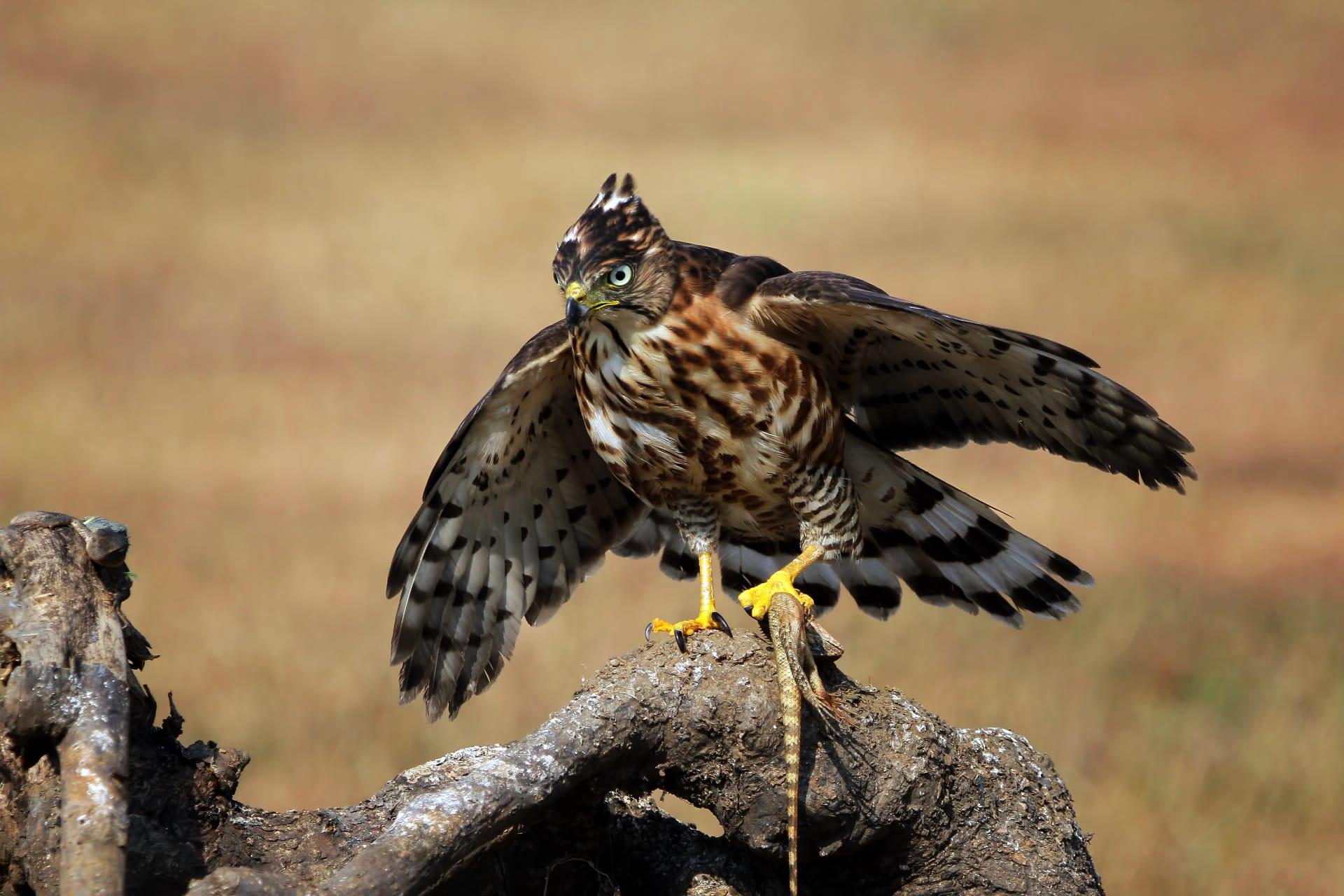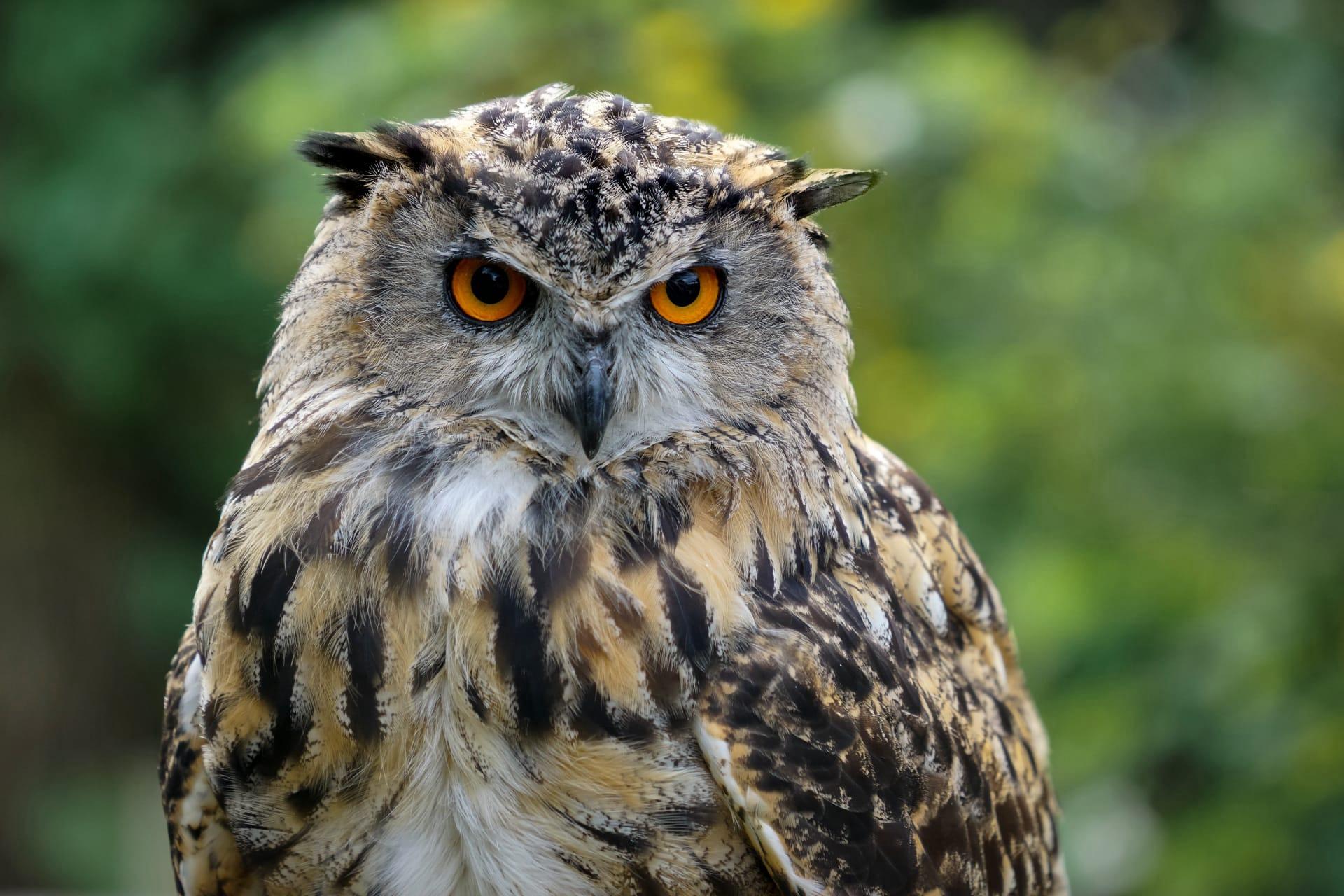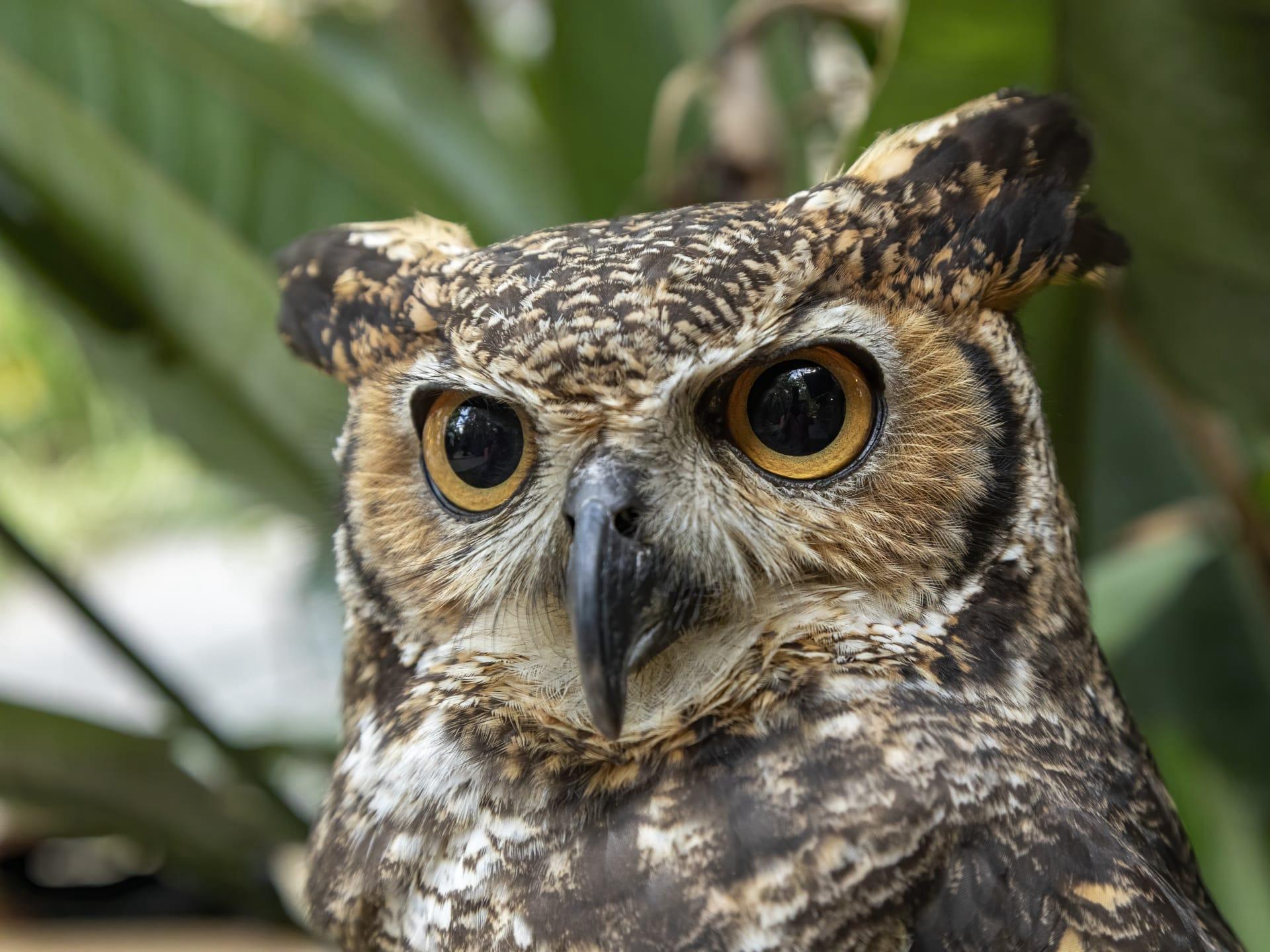1
Eagle Owls are one of the world's largest owl species, boasting an impressive wingspan. A full-grown adult can have a wingspan ranging from 138 to 200 centimeters, which is about the width of a small car. This expansive wingspan aids them in silent flight, allowing them to swoop down on prey with minimal sound. Additionally, Eagle Owls have distinctive ear tufts that aren't actually ears but feathers that aid in camouflage and communication. These tufts can stand erect when the owl is alert or lay flat when relaxed or trying to blend into its environment.
Eagle Owls possess exceptional vision, with large, forward-facing eyes that provide a wide field of binocular vision. Their eyes are adapted for night hunting, enabling them to see prey at long distances even in low light conditions. Interestingly, their eyes are fixed in their sockets, meaning they can't move their eyeballs like humans. To compensate, they can rotate their heads up to 270 degrees, providing a comprehensive view of their surroundings without moving their bodies. This ability is crucial for spotting prey and potential threats in the wild.

2
When it comes to hunting, Eagle Owls are apex predators and display remarkable adaptability. They primarily hunt at night, leveraging their keen hearing and sight to locate prey. Their diet is diverse, including mammals like rabbits, hares, and young foxes, as well as other birds, reptiles, and even fish. The size and strength of an Eagle Owl enable it to take down prey much larger than what most other owl species can handle. Their powerful talons exert a gripping force strong enough to instantly immobilize their targets.
Eagle Owls have a special feather structure that enables them to fly almost silently, a trait essential for a nocturnal hunter. The leading edges of their wings have serrations that reduce turbulence, and the soft feathers absorb sound, making their flight nearly inaudible. This silent flight not only aids in stalking prey but also in avoiding detection by other predators. It's a perfect example of how their physical adaptations have evolved to support their hunting lifestyle.

3
The mating and nesting behaviors of Eagle Owls are fascinating. They are monogamous birds, often forming lifelong pairs. During the mating season, males perform elaborate displays, including deep, resonant hoots and aerial acrobatics, to attract females. These displays serve to establish territory and demonstrate the male's fitness as a mate. Their nests are often found in cliff ledges, large tree cavities, or abandoned nests of other large birds, and they rarely build their own nests from scratch.
Female Eagle Owls lay between one to four eggs per clutch, with the average being two. The female incubates the eggs for about 34 to 36 days while the male brings food. After hatching, the owlets are dependent on their parents for several months. The young owls grow rapidly, reaching almost full size in just six weeks. However, they continue to be fed and taught hunting skills by their parents for up to five months after hatching. This extended parental care is crucial for the survival and development of the young owls in the wild.

4
Eagle Owls have a distinctive call, which is a deep, resonating "ooh-hu" that can be heard up to several kilometers away. This call is not only a means of communication between mates and signaling territory, but also plays a role in social interactions within the species. The pitch and frequency of the call can vary, indicating different messages or emotional states. Researchers have noted that these owls can distinguish individual owls by their calls, much like humans recognize each other's voices.
Despite their size and prowess, Eagle Owls face threats from human activities. Habitat loss due to urbanization and deforestation is a significant challenge. Additionally, they are sometimes persecuted due to misconceptions about them being a threat to livestock or game species. Conservation efforts are crucial to protect these magnificent birds, involving habitat preservation and public education to dispel myths about them. In some regions, conservationists have successfully increased their numbers through breeding programs and reintroductions into the wild.

5
Eagle Owls play a vital role in their ecosystems as top predators. By controlling populations of rodents and other small mammals, they help maintain a balanced ecosystem. Their presence indicates a healthy environment, as they require large territories with abundant prey and minimal disturbance. This makes them an important species for conservationists to monitor as indicators of ecological health.
Interestingly, Eagle Owls have been featured in various cultures and mythologies throughout history. In some cultures, they are revered as symbols of wisdom and foresight, while in others, they are associated with omens or supernatural powers. Their striking appearance and mysterious nocturnal habits have captivated human imagination, making them a subject of folklore and art across different civilizations. This cultural significance adds another layer of importance to their conservation, as they not only have ecological value but also cultural and historical significance.